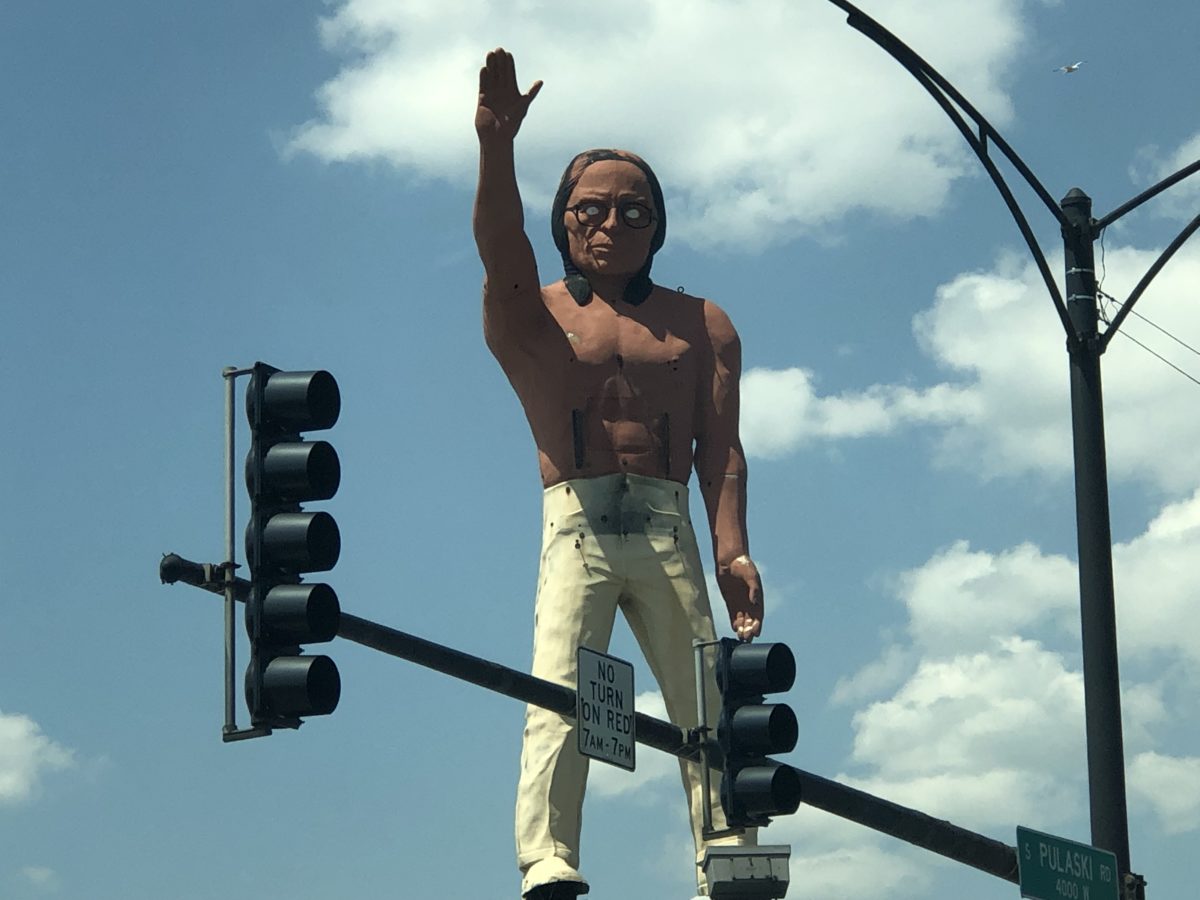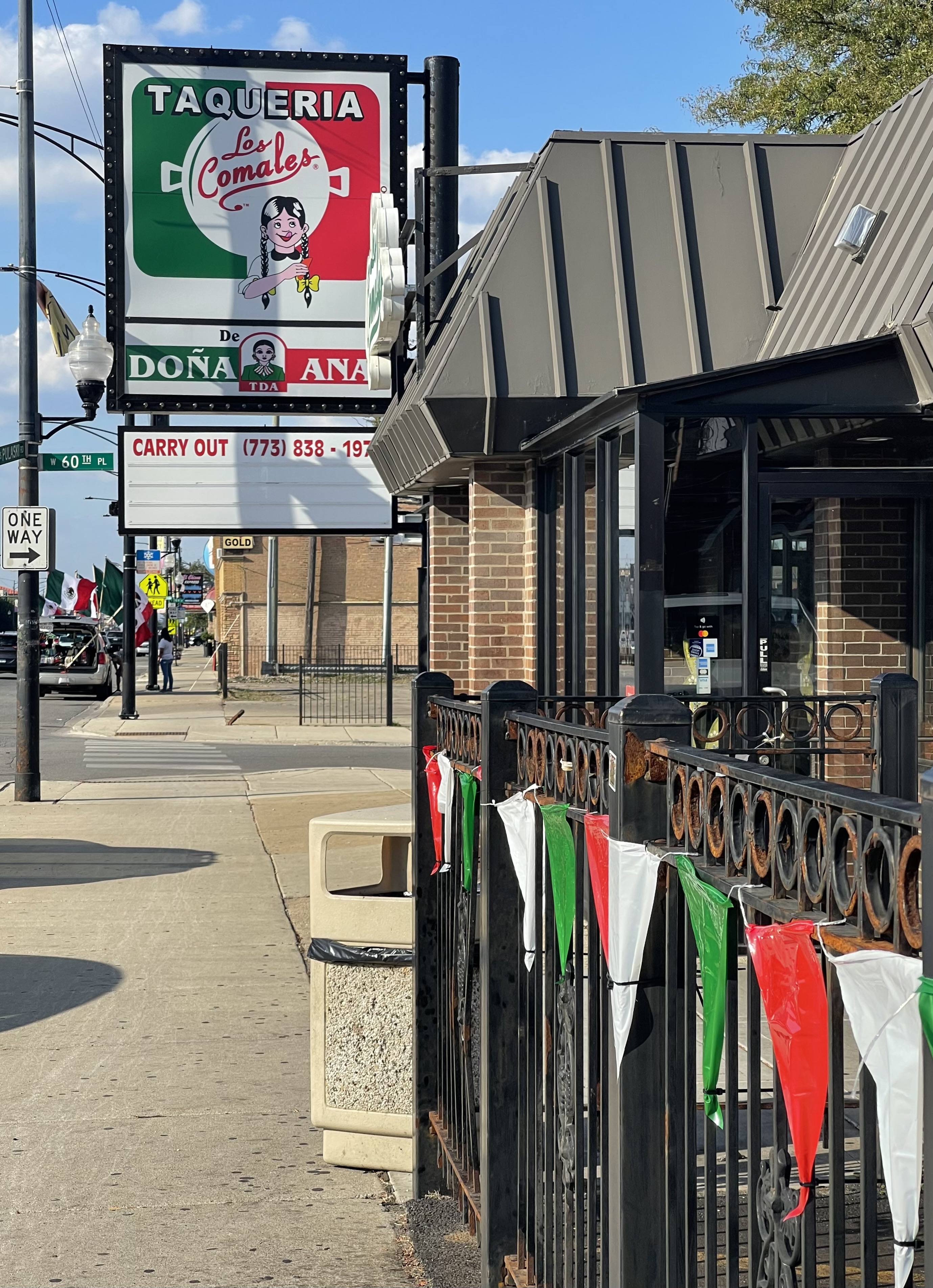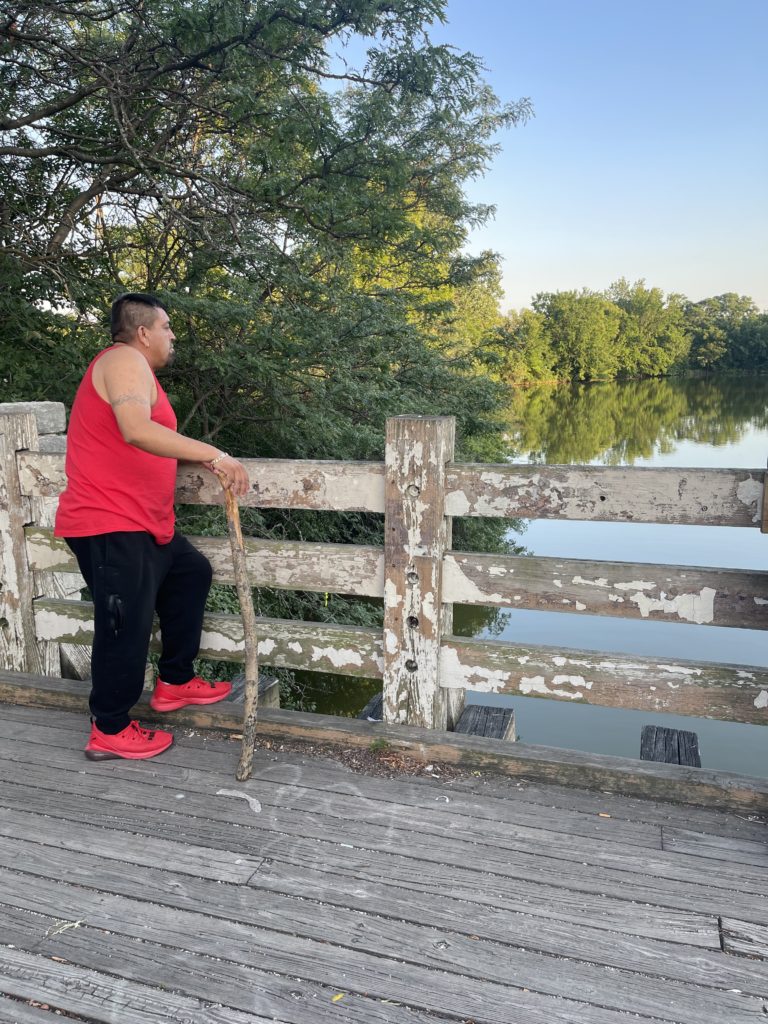- Best Good Old-Fashioned Fast Food Pit Stop: Windy City Hot Dogs
- Best Tacos De Barbacoa: Los Comales De Doña Ana
- Best Renovation: West Lawn Library
- Best Oasis Within An Oasis: Marquette Park Lagoon
West Lawn and Chicago Lawn have always been predominantly Catholic, immigrant, and family-oriented neighborhoods that share important commercial corridors. The sprawling Marquette Park spans both neighborhoods—further blurring the lines between each community area.
There’s also the unfortunate stain of racism in the local history of both, as memorialized by the monument to Dr. Martin Luther King Jr. installed in 2016 on 67th and Kedzie. This is near the site where he was stoned in 1966 as he bravely marched for civil rights through a park filled with angry protesters.
But as has been previously reported by the Weekly and others, significant demographic shifts at the turn of the century have transformed this area of the city. Census numbers show that the white population that initially settled in West Lawn and Chicago Lawn is in decline.
In 2010, there were about 7,300 residents who identified as white living in these neighborhoods, according to the Census. By 2020, that population had dropped to about 4,400. In contrast, about 62,300 Latinx residents—of predominantly Mexican descent—currently live in West Lawn and Chicago Lawn, per the 2020 Census.
This major shift was first palpable during the pandemic when traditional Mexican parades were canceled and the roads going downtown were blocked. So thousands upon thousands of Mexican residents flooded Pulaski, Kedzie, California, and beyond in celebration—bringing traffic to a standstill—and showing the city, and each other, that there’s power in their numbers.
But their political power isn’t up to par yet. There’s a strong legacy of machine politics on the Southwest Side that has helped prevent this, though probably not for much longer, given recent indictments of elected officials and the ongoing so-called exodus from City Council, as sitting aldermen decline to seek re-election in 2023.
The concept of the “Indian” monument on 63rd and Pulaski also needs some “unpacking” and re-evaluation due to this new context. There’s a problematic history of white Americans appropriating Native American imagery to advertise cigar shops (as was the original purpose of this effigy) and commodify it. I’ve read accounts of locals who would shoot arrows at its back in the old days. I hope the symbolism of the “Indian” is gaining a new meaning with the influx of brown people to the area.
Today, residents are writing a new chapter in the history of West and Chicago Lawn. I hope they embrace the magnitude of this moment.
Jacqueline Serrato is the Weekly’s editor-in-chief. She was born and raised in La Villita and has lived all over the South Side, including in West Lawn.




How about the Teddy Bear ? daycare center located at 64th Pulaski since 1978. Also Little Bear ? daycare center Nextdoor since 2011. Teddy Bear has been serving the south side of Chicago for the past 50 years with six locations.